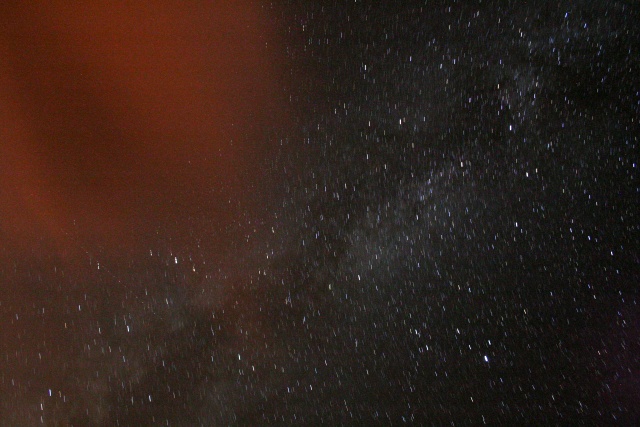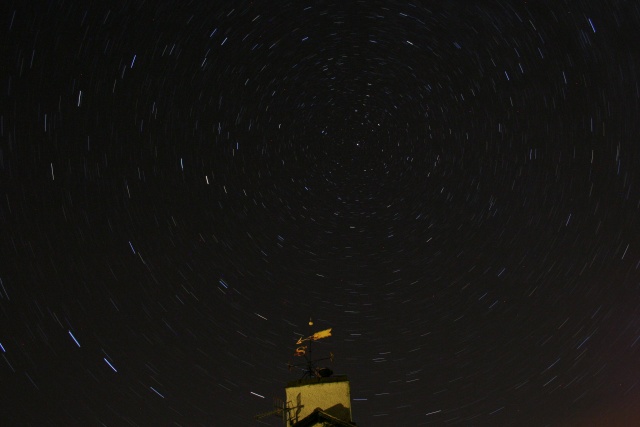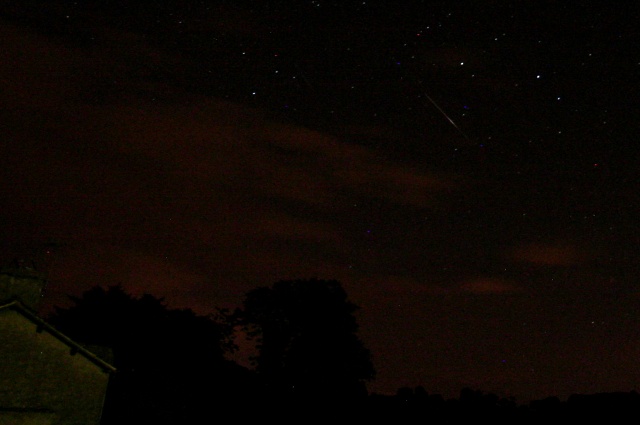As regular readers will know in early August Catherine and I went off on a little trip to the Lake District which was largely enjoyable (bar the rubbish Virgin trains and to a lesser extent the rain). We stayed in Near Sawrey a few miles south-west of Windermere.
Of course it was solely coincidence that we would happen to stay under dark skies, in a village where a conveniently placed hill would block any light pollution from Windermere, during the week of the Perseid meteor shower. :-) However as always the atmosphere is out to destroy me, and we probably only got about 90 minutes of clear skies in total, pretty poor for 4 nights.
My plans for photographs of the Milky Way reflected in Esthwaite Water, or magnitude -12 fireballs reflected in the lake never materialised due to the extent of the cloud cover. There was no point in wasting what little clear skies we had trekking down to the lake only to find it had clouded back up, the wind speeds would also have been prohibitive. So we mainly just hung out the front of Buckle Yeat, hiding behind a wall to block the lights.
Nevertheless the clear skies we got were nothing short of brilliant. The Andromeda galaxy easily visible, the Milky Way was positively glowing right the way across the sky with the dust lanes easy to make out. You didn't have to look away to try and make out the details in it like there is in Yeovil, and dream on trying to see it in Aldershot. It was just there, glowing and glowing rather brightly I might add.
What really surprised me the most however was stars close to the horizon were just as brilliant and plentiful as stars near the zenith. As someone who has always lived in a town of >30,000 people we're not used to seeing that much stuff lower down in the sky. The lower 30° is usually a total write-off even on a good night. On the first of my get-up-and-see-if-its-clear checks during the night I took one look out the window hoping to maybe see a couple of stars, and bang the whole constellation of Perseus and dozens of stars behind it were just sat there on the horizon. Within about 10 minutes I counted 6 meteors, and that's just looking through the window at the radiant, and that was on the Tuesday night, the peak was on Friday morning. A couple of dozen more awaited us outside in the 30 minutes or so of clear skies we had that night.
In the brief time we had I did take a few images of course.

First up, the Summer Triangle made up of the stars Deneb, Vega and Altair and of course the Milky Way behind them. And of course a huge lump of cloud. Exposure time was about 30 seconds at ISO1600. The amount of detail that this image picked up is remarkable; this was only a 30 second exposure. Back in Yeovil I'd need almost double that to get as much detail. And of course the entire image would be orange from all the light pollution, not just the clouds.

The traditional star trails around Polaris image. This was an exposure of about 12 or 13 minutes at ISO200. Again this would have been good reflected in a lake with say an hour's worth of exposure.

And on the Thursday night, the only Perseid meteor that was bright enough and happened to fly in front of the camera. It was clouding over rapidly at this point and this was the last part of the sky to remain clear within about 10 minutes it had completely become overcast. This was a 20 second exposure at ISO1600.
What's in store for the future? Well I'll get the full resolution images over on my gallery at some point. And perhaps next time I'll run some statistical analysis of cloud cover in the region so I can predict the best week to go and we'll forget the meteor showers, and this time I'll take an equatorial mount with me, a 10 minute exposure on the Milky Way under those skies would been awesome.